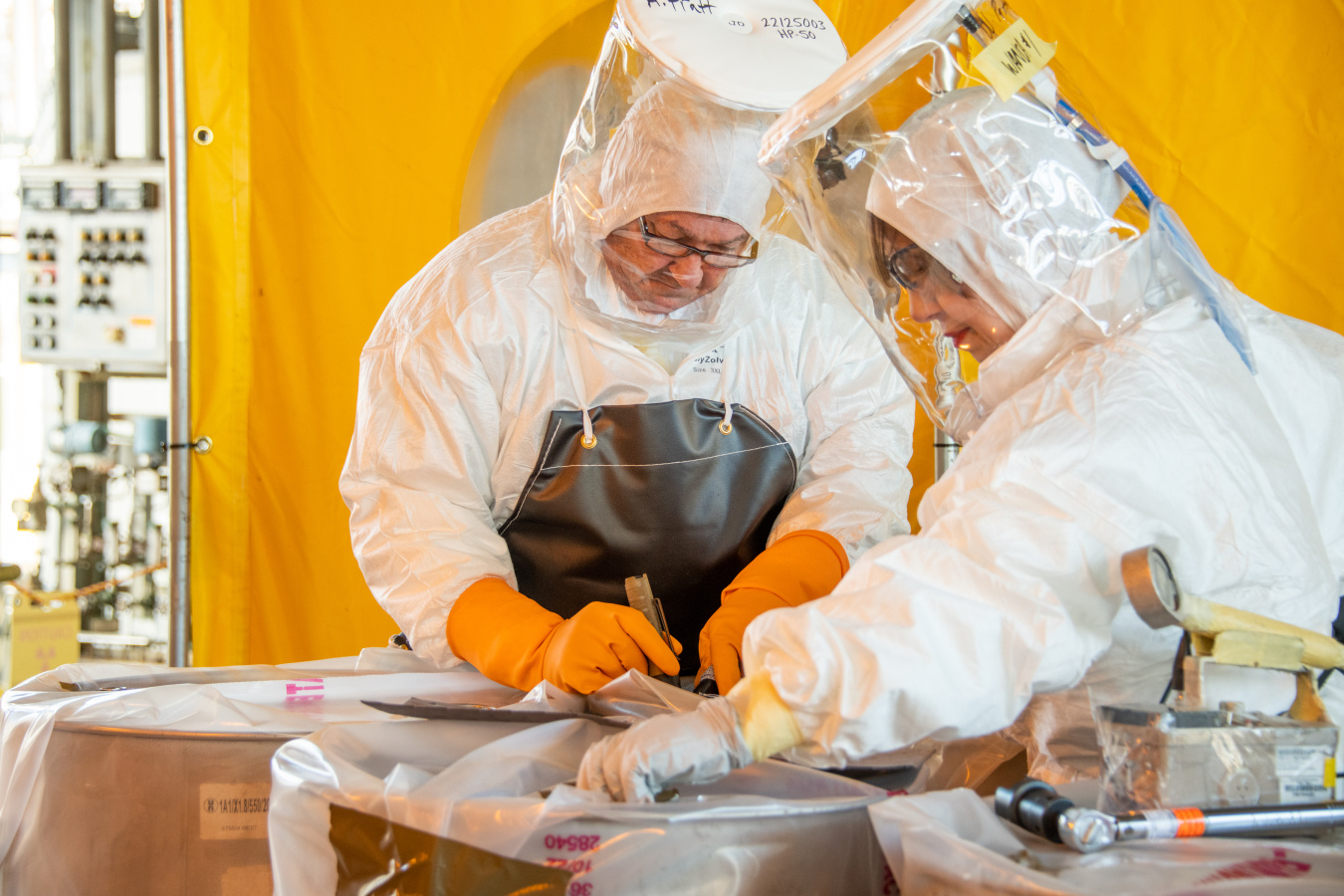The EM program at the Savannah River Site (SRS) has successfully transferred the initial discard of uranium solution in its new Accelerated Basin De-inventory (ABD) mission.
Office of Environmental Management
March 21, 2023
H Canyon Outside Facilities Operator Andrew Pratt, left, and H Canyon Outside Facilities Radiological Control Operator Wanda Patterson load drums of a solution used to prepare for material transfer from H Canyon to the Defense Waste Processing Facility at Savannah River Site.
AIKEN, S.C. – The EM program at the Savannah River Site (SRS) has successfully transferred the initial discard of uranium solution in its new Accelerated Basin De-inventory (ABD) mission, which will result in significant savings and expedite the disposition of spent nuclear fuel (SNF) at the site.
After several years of planning, the transfer of the solution from the H Canyon Chemical Separations Facility to the site’s liquid waste program marks the first of many in the newly implemented ABD mission.
The ABD mission replaces a previously used method that involved dissolving, purifying and blending the highly enriched uranium from SNF into low enriched uranium that could be used to produce fuel for commercial power reactors.
The new ABD mission also dissolves the SNF, but then prepares the resulting dissolved solution for discard to the H Tank Farm, which is a grouping of underground waste tanks at SRS. The solution is mixed with other sludge waste already stored in the tanks.
Radioactive liquid waste from SRS chemical separations processes, like those in H Canyon, is stored in the SRS Tank Farms in both solid and liquid forms. In these tanks, the insoluble solids in the waste settle to the bottom, forming sludge. Sludge contains the highest concentration of long-lived radioactivity.
The sludge waste is vitrified, or immobilized, in glass in the site’s Defense Waste Processing Facility. The vitrified waste is stored in stainless steel canisters in safe, onsite interim storage until a federal repository is established. The SRS Liquid Waste Program is run by contractor Savannah River Mission Completion (SRMC).
“Taken as a whole, the processing and discarding success of ABD material is highly sensitive to technology development timelines, regulatory requirement impacts and processing schedules throughout the material’s movement through SRS facilities,” said James Therrell, program manager for SRS managing and operating contractor Savannah River Nuclear Solutions (SRNS). “Integration between SRNS and SRMC with support from the Department of Energy is paramount to ensure the processing systems and associated paperwork stay aligned and optimized in support of the mission.”
Matt Arnold, H Area facility manager for SRNS, said that adding ABD material to the site’s tank waste represents many months of integration between SRMC and SRNS, as H Tank Farm and H Canyon both have highly complex processing schedules that must align.
“The ability to coordinate timing for ABD is essential to prevent extending the mission, avoiding downtime and adding operating expense,” Arnold said.
Getting to the point of transferring the first discard of uranium solution under the new ABD mission was a team effort across different contractors, work groups and the DOE, he said.
“All of the preparation for this first transfer will set us up for future success,” Arnold said. “These changes have not only made the ABD mission possible, but have also saved significant lifecycle costs, proving yet again that we are committed to making the world safer.”
To receive the latest news and updates about the Office of Environmental Management, submit your e-mail address.

